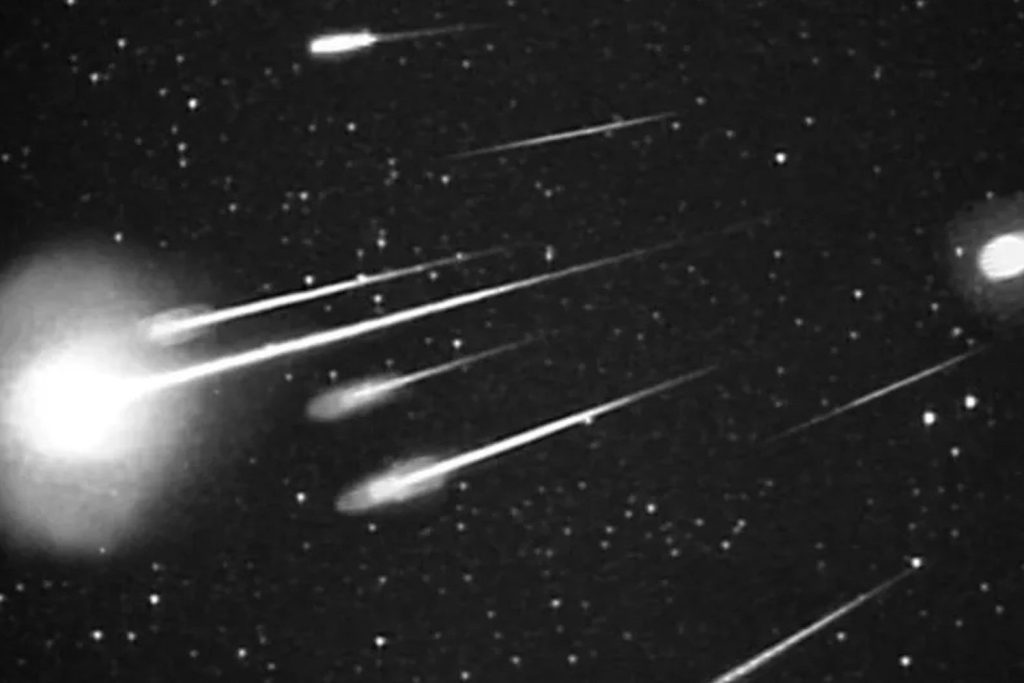
Your Guide to the Leonids: How to See November’s Fiery Meteor Display (Image Credit: Gizmodo-com)
The fallen-off bits of an ancient comet will graze our atmosphere this month, producing one of the more famous annual meteor showers known for being bright and colorful.
This year, the Leonid meteor shower will streak across Earth’s skies from November 3 to December 2, peaking on November 18 around 1 a.m. ET, according to EarthSky. It might be worthwhile to be on the lookout for meteors and fireballs lighting up the sky from the night of November 17 until the dawn of the next day.
To ensure the best viewing of the meteor shower, you should start gazing upwards after midnight, with peak viewing hours taking place right before sunrise. You don’t need to face a certain direction as the Leonids are visible in all parts of the sky. It’s actually better to view the Leonids away from its radiant, or the point in the sky from which they appear to radiate. In this case, the meteor shower’s radiant point is the constellation of Leo, but if you look directly at it, the meteors will appear shorter so you might want to look in a different direction to capture all of the Leonids in their long and bright glory.
You don’t need a telescope or binoculars to see the Leonids. To ensure good viewing conditions, you should go to the darkest location possible, possibly a rooftop if you live in a city like New York so that you can get away from bright lights.
Unfortunately, the Leonids meteor shower will have to compete with bright moonlight this year. This month, the full Moon will reach peak illumination on November 15, right as the meteor shower is getting ready to show off its fireballs. The Leonids will peak with a waning gibbous Moon in the night sky, making it slightly more difficult to peak the meteors.
The Leonids produce bright fireballs and Earth-grazing meteors that can be quite colorful. Fireballs originate from larger chunks of material, and therefore produce bigger explosions of light and color that lasts longer than an average meteor streak. Streaking close to the horizon, Earth-grazing meteors often flaunt long and colorful tails. The meteors are also fast, racing across the skies at speeds of 44 miles (71 kilometers) per second, according to NASA, which makes the Leonids one of the fastest meteor showers.
Meteor showers are broken off bits of comets and asteroids as they fly by Earth. As comets approach the Sun, their dusty material forms a tail that follows them on their orbit. Each year, Earth’s orbit places the planet in a position to cross the path of this debris trail. Some of the dust interacts with Earth’s atmosphere and disintegrates, creating fiery streaks across our skies.
The Leonids originate from Comet 55P/Tempel-Tuttle, which orbits the Sun every 33 years. Ernst Tempel and Horace Tuttle discovered the comet, which measures around 2.24 miles (3.6 km) across, in 1865 and 1866. Every 33 years or so, when the shower takes place at the same time that the comet is closest to the Sun during its orbit, sky watchers are treated to a Leonids storm. As the comet sweeps through the inner solar system, nearest to our host star, new sets of comet particles fall off that quickly turns into elongated streaks of light.
During the peak of a Leonids storm, viewers can see hundreds to thousands of meteors per hour. The last meteor storm took place in 2002, producing 500 to 1,000 meteors per hour. Although a meteor storm likely won’t be happening this year, the Leonids are still guaranteed to put on a decent show. So it will be worth it to stay up and take in the night sky.





